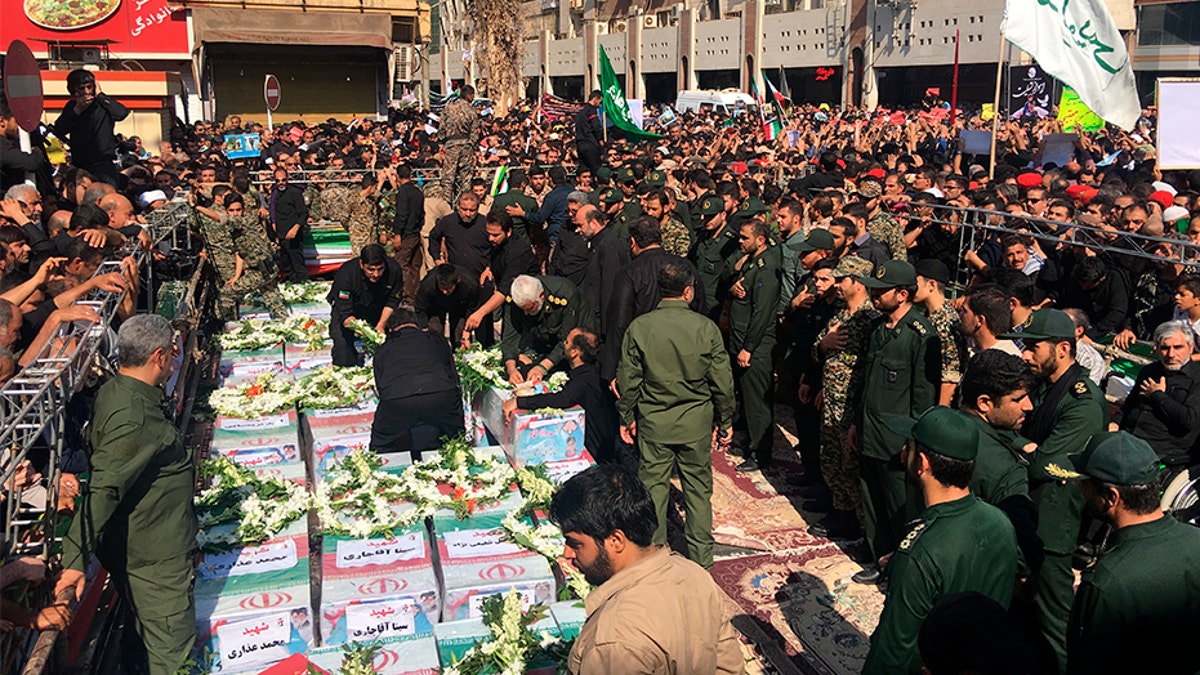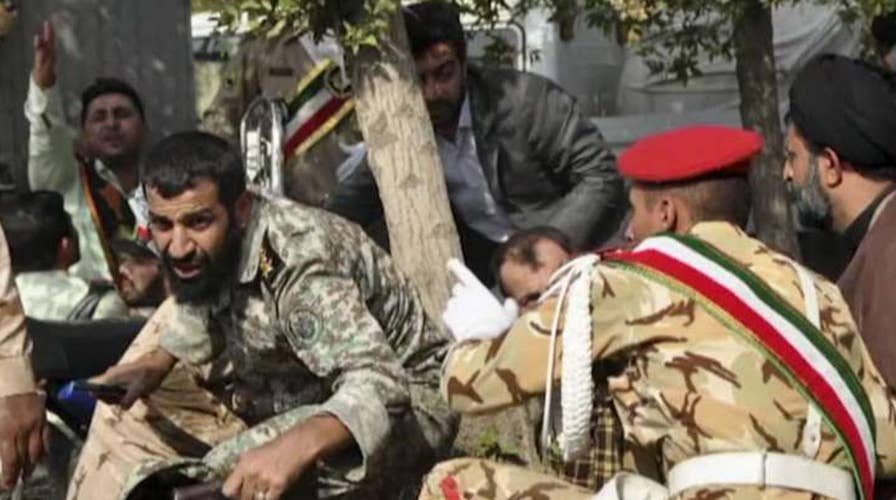Dozens killed after shooting at Iranian military parade
At least two dozen people killed after gunman attacks military parade in Iran; 'Nuclear Showdown' author Gordon Chang reacts.
A threatening video showing a simulated Iranian ballistic missile strike on Israel and Saudi Arabia was posted to a pro-regime Twitter account Tuesday -- but it was quickly yanked just hours ahead of a speech by the country’s president at the U.N. General Assembly.
The video, which was published and then deleted by the Fars news agency, comes in the aftermath of an assault during an Iranian military parade on Saturday that left 25 dead, including 12 members of the Islamic Republic’s Revolutionary Guard. Iran has charged the attack was carried out by militants trained by Israel and the Gulf states, and supported by the U.S. American officials deny having played any role.
"The era of the hit-and-run has expired," Iranian Supreme Leader Ayatollah Ali Khamenei is heard saying in the video, in a segment taken from an April speech, according to the Associated Press. "A heavy punishment is underway."
Other scenes in the video – which features music similar to what would be heard in an action movie film trailer – show missiles being launched into the sky and bullseyes focusing on Riyadh, Saudi Arabia’s largest city, and Jerusalem. In another portion, a bullseye also moves over Abu Dhabi in the United Arab Emirates, the Associated Press reported.
The video was removed ahead of President Hassan Rouhani’s speech at the U.N. General Assembly in New York City on Tuesday, but Twitter users were able to download and save portions of it before it disappeared. There appeared to be no immediate response to the video from Saudi Arabia, Israel or the United Arab Emirates.
Meanwhile, Iranian officials on Tuesday identified the five men who they say carried out the parade attack in Ahvaz, in which militants disguised as soldiers opened fire as rows of troops marched past officials.
Authorities have blamed the attack on Arab separatists. Yet at least two of the men identified have appeared in a video distributed by ISIS in which the terror group claims responsibility, further complicating the process of determining who exactly was behind the assault.
Saturday's attack targeted one of many parades in Iran marking the start of the country's long 1980s war with Iraq, part of a commemoration known as "Sacred Defense Week."

Caskets of those who died in an attack on a military parade in Iran are displayed in Ahvaz, Iran on Monday. (AP)
Iran in recent days has vowed to provide a “devastating” response to the killings.
Hossein Salami, the deputy head of the Revolutionary Guard, was at a funeral for one of the victims when he reportedly said, “You have seen our revenge before...You will see that our response will be crushing and devastating and you will regret what you have done.”
Khamenei, who has final say on all state matters, said Monday the attack showed Iran has "a lot of enemies," according to remarks posted on his website. He linked the attackers to the United States, Saudi Arabia and the UAE.
"Definitely, we will harshly punish the operatives" behind the terror attack, he added.
Iran has fired its ballistic missiles twice in anger in recent years, according to the Associated Press. In 2017, responding to an ISIS attack on Tehran, the Guard fired missiles striking ISIS targets in Syria. Then, earlier this month, it launched a strike on a meeting of Iranian Kurdish separatists in northern Iraq.
The Guard, a paramilitary force answerable only to Khamenei, has sole control over Iran's ballistic missile program.
Under Khamenei's orders, Iran now limits its ballistic missiles to a range of 1,240 miles, which gives Tehran the range to strike Israel, Gulf countries like Saudi Arabia and the UAE, as well as regional American military bases.
The Associated Press contributed to this report.

